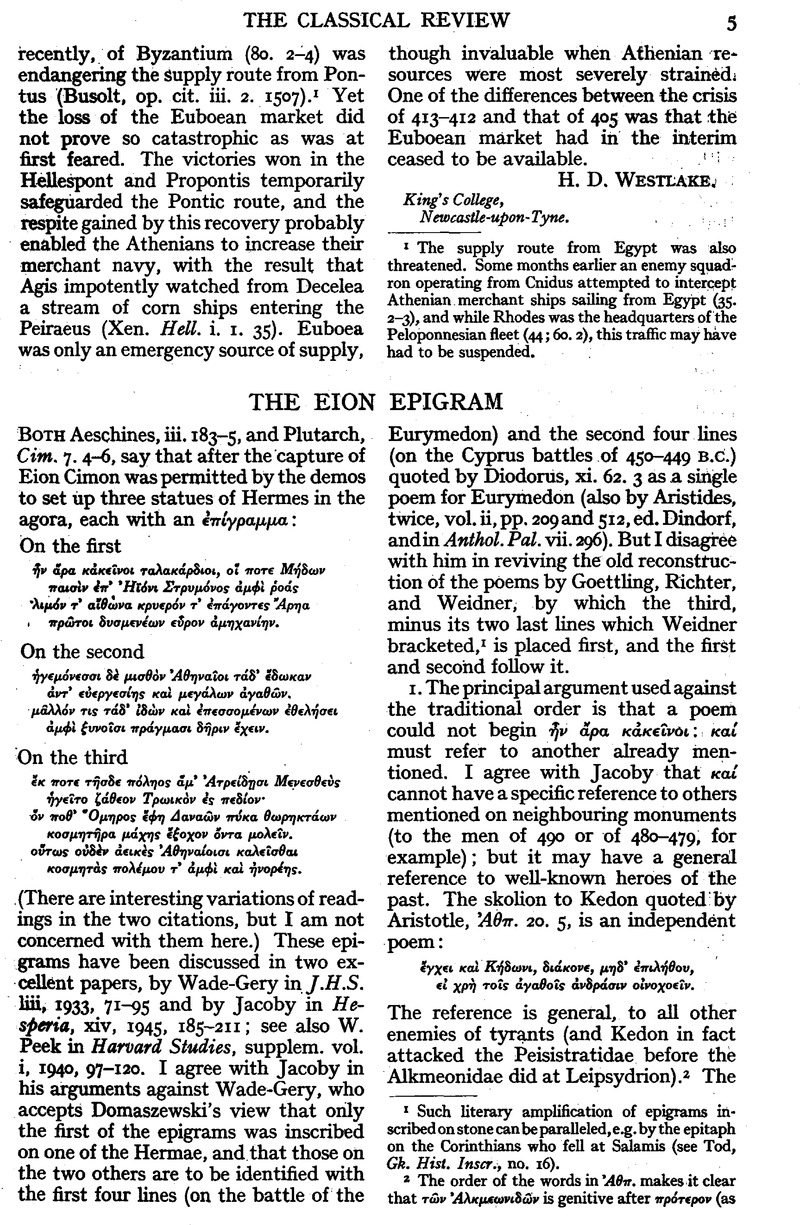No CrossRef data available.
Article contents
The Eion Epigram
Published online by Cambridge University Press: 27 October 2009
Abstract

- Type
- Review Article
- Information
- Copyright
- Copyright © The Classical Association 1948
References
page 5 note 1 Such literary amplification of epigrams inscribed on stone can be paralleled, e.g. by the epitaph on the Corinthians who fell at Salamis (see Tod, Gk. Hist. Inscr., no. 16).
page 5 note 2 The order of the words in Ἀθπ. makes it clear that Ἀλκμεωνιδ⋯ν is genitive after πρότερον (as Hude and Kenyon), not a partitive with Kedon (as Mathieu—Haussouiller).
page 6 note 1 Note particularly Od. iii. 84–5.
page 7 note 1 See Raubitschek, , Hesp. x, 1941, 284–295CrossRefGoogle Scholar, for the latest text and discussion. His conclusions about the number of names recorded, especially his suggestion that 40 of the 100 were metics, are not convincing.


